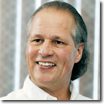
 By TC North
By TC North
June 10, 2010
What sets world-class athletes and business leaders apart from others? They think, believe and act differently. Compare the typical business “post mortem” after a project or deal has gone badly, to how world-class athletes and business leaders deal with mistakes and failures.
How a typical business post mortem is conducted.
-¢ The whole discussion is framed with death.
-¢ The conversation is negative, depressing and demotivating.
-¢ Almost all the time is spent on what went wrong rather than on how to improve.
-¢ Very little time, if any, is spent on mentally or physically correcting mistakes.
Compare this to what Karl Mecklenburg used to do with his mistakes and failures. Mecklenburg is a six-time Denver Broncos all-pro NFL linebacker, despite being told he was too slow to be an NFL linebacker. In fact, he was the 213th draft pick in the 12th round, a position where most athletes never even make an NFL team, let alone become all-pro.
How world-class athletes deal with mistakes and failures.
-¢ Mecklenburg watched game film after each game and dissected his great plays and mistakes, examining every nuance of his game. He learned from both his great plays (so he could repeat them) and his mistakes. Then he defined two or three very specific goals for that week on how to improve his game. This is the first difference: immediate action items (goals) to improve.
-¢ The following week, he practiced his goals mentally - imagining making the specific moves on the field that he was working to improve, and making them physically on the practice field as perfect as he could. The second difference: immediately implementing/practicing improvements, including mental rehearsal.
-¢ During that week, he mentally and/or physically practiced his improvements hundreds of times, creating a new mental/physical pattern that led to greater success. The third major difference: using massive amounts of repetition to train his mind and body to instinctively make the right moves.
This is how world-class athletes continue to improve. It’s also how world-class business leaders quickly improve - they train their minds for success. Try this mental training technique that world-class performers use:
Rewind/Review/Take2
1. Rewind. In your mind, rewind back to before the mistake occurred - mistakes are usually an accumulation of small things that took place before the actual mistake happened. Rewind as far back in your mind, or in the collective mind of your team, as you need to.
2. Replay. In the greatest detail you can, replay every aspect of what took place - every little nuance that added up to the end result.
3. Take2. First, define the ideal realistic scenario instead of the mistake. See, feel, hear and imagine every nuance and aspect of what your ideal scenario would be like. Then keep imagining the ideal over and over in your mind and in the minds of everyone involved to create new neuropathways, new thinking patterns, in your mind. This corrects the mistake by reprogramming your mind so that next time you are in a similar situation; the strongest image in your mind is now the ideal scenario, not the mistake.
This is one of the top secrets of Olympic athletes, professional athletes and world-class business leaders. Success is transformed failure. They don’t dwell negatively on mistakes and failures; they have the courage to fully embrace their failings and then change their thinking to improve. What could you, your team and your company accomplish if you had this mental discipline?
TC North, Ph.D. is a high-performance business coach and speaker. He can be reached at [email protected].








